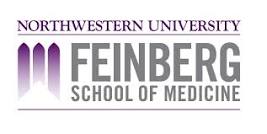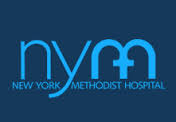A Phase 3 Randomized, Double-blind Study to Evaluate the Efficacy and Safety of Apremilast (CC-10004) in Subjects With Active Behcet's Disease
| Status: | Active, not recruiting |
|---|---|
| Healthy: | No |
| Age Range: | 18 - Any |
| Updated: | 4/4/2019 |
| Start Date: | December 16, 2014 |
| End Date: | March 3, 2021 |
A Phase 3, Multicenter, Randomized, Doubleblind, Placebo-controlled, Parallel Group Study, Followed by an Active-treatment Phase to Evaluate the Efficacy and Safety of Apremilast (CC-10004) in the Treatment of Subjects With Active Behcet's Disease
Behcet's disease, is a rare disorder that causes inflammation in blood vessels throughout the
body. The signs and symptoms of Behcet's disease may include mouth sores, eye inflammation,
skin rashes and lesions, and genital sores that vary from person to person and may come and
go on their own. The exact cause of Behcet's is unknown, but it may be an autoimmune
disorder, which means the body's immune system mistakenly attacks some of its own healthy
cells.
This study will test whether apremilast is better than placebo (inactive substance in the
same form as the drug) for the treatment of oral ulcers in subjects with active Behçet's
disease. Other manifestations of the disease will also be assessed, such as, pain and
tenderness in joints, eye inflammation, genital ulcers, and skin disease. This study also
will test how well the body tolerates apremilast.
This study is a randomized, placebo-controlled, parallel design. About 204 subjects will
participate. The placebo-controlled period will be 12 weeks long and patients will receive
apremilast or placebo. After the 12-week placebo-controlled period, all subjects will receive
apremilast for 1 year. All subjects will have their final study visit 4 weeks after stopping
apremilast treatment.
body. The signs and symptoms of Behcet's disease may include mouth sores, eye inflammation,
skin rashes and lesions, and genital sores that vary from person to person and may come and
go on their own. The exact cause of Behcet's is unknown, but it may be an autoimmune
disorder, which means the body's immune system mistakenly attacks some of its own healthy
cells.
This study will test whether apremilast is better than placebo (inactive substance in the
same form as the drug) for the treatment of oral ulcers in subjects with active Behçet's
disease. Other manifestations of the disease will also be assessed, such as, pain and
tenderness in joints, eye inflammation, genital ulcers, and skin disease. This study also
will test how well the body tolerates apremilast.
This study is a randomized, placebo-controlled, parallel design. About 204 subjects will
participate. The placebo-controlled period will be 12 weeks long and patients will receive
apremilast or placebo. After the 12-week placebo-controlled period, all subjects will receive
apremilast for 1 year. All subjects will have their final study visit 4 weeks after stopping
apremilast treatment.
Inclusion Criteria:
- 1. Understand and voluntarily sign an informed consent document prior to any study
related assessments/procedures being conducted.
2. Male and female subjects ≥18 years of age at the time of signing the informed
consent document.
3. Able to adhere to the study visit schedule and other protocol requirements. 4.
Diagnosed with Behçet's disease meeting the International Study Group (ISG) criteria
5. Oral ulcers that occurred at least 3 times in the previous 12-month period,
including oral ulcers at the Screening Visit.
6. Subjects must have at least 2 oral ulcers at Visit 1 (Screening Visit), and:
a. at least 2 oral ulcers at Visit 2 (day of randomization), when Visit 2 occurs at
least 14 days after Visit 1. OR b. at least 3 oral ulcers at Visit 2 (day of
randomization), when Visit 2 occurs at any time between 1 day and 42 days after Visit
1.
7. Have prior treatment with at least 1 non-biologic Behçet's Disease therapy, such
as, but not limited to, topical corticosteroids, or systemic treatment.
8. Candidate for systemic therapy, for the treatment of oral ulcers.
a. A candidate for systemic therapy is a subject judged by the study Investigator as
someone whose mucocutaneous ulcers are considered inappropriate for topical therapy
based on the severity of disease and extent of the affected area, or whose oral ulcers
cannot be adequately controlled by topical therapy.
9. Laboratory Measures: Must meet the following laboratory measures:
- Hemoglobin > 9 g/dL
- White blood cell (WBC) count ≥ 3000 /L(≥ 3.0 X 10^9/L) and
≤ 14,000/L (≤ 14 X 10^9/L )
- Platelet count ≥ 100,000 /L (≥ 100 X 109/L)
- Serum creatinine ≤ 1.5 mg/dL (≤ 132.6 μmol/L)
- Total bilirubin ≤ 2.0 mg/dL
- Aspartate transaminase (AST [serum glutamic oxaloacetic transaminase, SGOT]) and
alanine transaminase (ALT [serum glutamate pyruvic transaminase, SGPT]) ≥1.5 X ULN.
Subjects who fail screening due to ≥ 1.5 X ULN AST/SGOT and/or ALT/SGPT will be
allowed to repeat AST/SGOT and/or ALT/SGPT tests within the Screening Phase. Repeat
test results should be ≤ ULN (within reference range) to be eligible.
Laboratory tests will be allowed to be repeated 1 time if, in the Investigator's clinical
judgment, there is a reasonable possibility of the repeat tests not meeting the exclusion
values, and with concurrence from the Medical Monitor.
Contraception Requirements:
All Females of Child Bearing Potential (FCBP) must use one of the approved contraceptive
options as described below while taking apremilast and for at least 28 days after
administration of the last dose of the apremilast.
At the time of study entry, and at any time during the study when a FCBP's contraceptive
measures or ability to become pregnant changes, the Investigator will educate the subject
regarding contraception options and the correct and consistent use of effective
contraceptive methods in order to successfully prevent pregnancy.
All FCBP must have a negative pregnancy test at Visits 1 and 2. All FCBP subjects who
engage in activity in which conception is possible must use one of the approved
contraceptive options described below:
Option 1: Any one of the following highly effective methods: hormonal contraception (oral,
injection, implant, transdermal patch, vaginal ring); intrauterine device (IUD); tubal
ligation; or partner's vasectomy; OR Option 2: Male or female condom (latex condom or
non-latex condom NOT made out of natural [animal] membrane [for example, polyurethane]);
PLUS one additional barrier method: (a) diaphragm with spermicide; (b) cervical cap with
spermicide; or (c) contraceptive sponge with spermicide.
Male subjects (including those who have had a vasectomy) who engage in activity in which
conception is possible must use barrier contraception (latex or non-latex condoms NOT made
out of natural [animal] membrane [for example, polyurethane]) while on IP and for at least
28 days after the last dose of IP.
Exclusion Criteria:
The presence of any of the following will exclude a subject from the study enrollment:
Disease Specific Exclusions:
1. Behçet's disease-related active major organ involvement - pulmonary (eg, pulmonary
artery aneurysm), vascular (eg, thrombophlebitis), gastrointestinal (eg, ulcers along
the gastrointestinal tract), and central nervous systems (eg, meningoencephalitis)
manifestations, and ocular lesions (eg, uveitis) requiring immunosuppressive therapy;
however:
1. Previous major organ involvement is allowed if it occurred at least 1 year prior
to Visit 1 (Screening Visit) and is not active at time of enrollment.
2. Subjects with mild BD-related ocular lesions not requiring systemic
immunosuppressive therapy are allowed.
3. Subjects with BD-related arthritis and BD-skin manifestations are also allowed.
2. Previous exposure to biologic therapies for the treatment of BD oral ulcers
- Previous biologic therapy exposure is allowed for other indications, including other
manifestations of BD
3. Prior use of apremilast.
4. Use of any investigational medication within 4 weeks prior to Visit 2 or 5
pharmacokinetic/pharmacodynamic half-lives (whichever is longer).
5. Current use of strong cytochrome P450 enzyme inducers (eg, rifampin, phenobarbital,
carbamazepine, phenytoin)
6. Having received concomitant immune modulating therapy (except oral or topical
corticosteroids) within:
- Seven days prior to Visit 2 (Baseline Visit; day of randomization) for
colchicines
- Ten days prior to Visit 2 (Baseline Visit; day of randomization) for azathioprine
and mycophenolate mofetil
- Four weeks (28 days) prior to Visit 2 (Baseline Visit; day of randomization) for
cyclosporine, methotrexate, cyclophosphamide, thalidomide, and dapsone.
Note: Oral and topical corticosteroids must have been tapered as appropriate and
discontinued prior to the day of Visit 2 (day of randomization).
- At least 5 terminal half-lives for all biologics, including, but not limited to,
those listed below; within:
- Four weeks prior to Visit 2 (Baseline Visit; day of randomization) for etanercept
- Eight weeks prior to Visit 2 (Baseline Visit; day of randomization) for
infliximab
- Ten weeks prior to Visit 2 (Baseline Visit; day of randomization) for adalimumab,
golimumab, certolizumab, abatacept, and tocilizumab
- Six months prior to Visit 2 (Baseline Visit; day of randomization) for
secukinumab
7. Having received intra-articular or parenteral corticosteroids within 6 weeks (42 days)
prior to Visit 2 (Baseline Visit; day of randomization).
8. Any significant medical condition, laboratory abnormality, or psychiatric illness that
would prevent the subject from participating in the study.
9. Any condition, including the presence of laboratory abnormalities, which places the
subject at unacceptable risk if he/she were to participate in the study.
10. Inability to provide voluntary consent.
11. Pregnant women or breast feeding mothers.
12. Systemic or opportunistic fungal infection.
13. Known active current or history of recurrent bacterial, viral, fungal, mycobacterial
or other infections (including but not limited to tuberculosis and atypical
mycobacterial disease, hepatitis B and C and herpes zoster, histoplasmosis,
coccidiomycosis, but excluding onychomycosis) or any major episode of infection
requiring hospitalization or treatment with IV or oral antibiotics within 4 weeks of
the Screening Phase.
14. Clinically significant abnormality on chest radiograph.
15. Clinically significant abnormality on 12-lead ECG.
16. History of positive test for, or any clinical suspicion of, human immunodeficiency
virus (HIV), or congenital or acquired immunodeficiency (eg, common variable
immunodeficiency disease).
17. Malignancy or history of malignancy, except for:
1. treated (ie, cured) basal cell or squamous cell in situ skin carcinomas;
2. treated (ie, cured) cervical intraepithelial neoplasia (CIN) or carcinoma in situ
of the cervix with no evidence of recurrence within the previous 5 years of Visit
1.
18. Any condition that confounds the ability to interpret data from the study.
19. Scheduled surgery or other interventions that would interrupt the subject's
participation in the study.
20. Prior history of suicide attempt at any time in the subject's lifetime prior to Visit
2 (Baseline Visit; day of randomization) or major psychiatric illness requiring
hospitalization within 3 years prior to Visit 2 (Baseline Visit; day of
randomization).
We found this trial at
12
sites
2315 Stockton Blvd.
Sacramento, California 95817
Sacramento, California 95817
(916) 734-2011

University of California, Davis Medical Center UC Davis Medical Center serves a 65,000-square-mile area that...
Click here to add this to my saved trials
University of New Mexico Founded in 1889 as New Mexico’s flagship institution, the University of...
Click here to add this to my saved trials
Click here to add this to my saved trials
New York Methodist Hospital A voluntary, acute-care teaching hospital, New York Methodist Hospital's mission is...
Click here to add this to my saved trials
303 E Chicago Ave
Chicago, Illinois 60611
Chicago, Illinois 60611
(312) 503-8194

Northwestern University Feinberg School of Medicine Northwestern University Feinberg School of Medicine, founded in 1859,...
Click here to add this to my saved trials
Click here to add this to my saved trials
Click here to add this to my saved trials
Click here to add this to my saved trials
Click here to add this to my saved trials
Click here to add this to my saved trials
Click here to add this to my saved trials
Click here to add this to my saved trials

